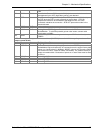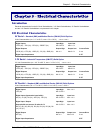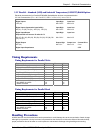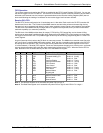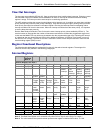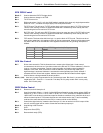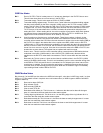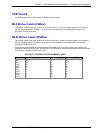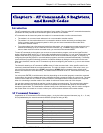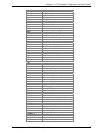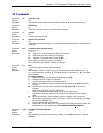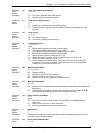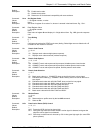
Chapter 4 – SocketModem Parallel Interface – A Programmer’s Description
SocketModem Global MT5634SMI Developer’s Guide 20
FCR FIFO Control
Bits 6–7: Used to determine RX FIFO trigger levels.
Bit 5: Used to detect a change in the FCR.
Bit 4: TX FIFO overrun bit.
Bit 3: DMA mode select. If bit 3 is a 0, the 16450 mode is enabled which does only single-byte transfers.
When bit 3 is a 1, it enables a multiple byte (FIFO mode) data transfer.
Bit 2: TX FIFO reset. This will cause TX FIFO pointer logic to be reset (any data in TX FIFO will be lost).
This bit is self clearing; however, a shadow bit exists that is cleared only when read by the host,
thus allowing the host to monitor a FIFO reset.
Bit 1: RX FIFO reset. This will cause RX FIFO pointer logic to be reset (any data in RX FIFO will be lost).
This bit is self clearing; however, a shadow bit exists that is cleared only when read by the host,
thus allowing the host to monitor a FIFO reset.
Bit 0: FIFO enable. The host writes this bit to logic 1 to put the block in FIFO mode. This bit must be a 1
when writing other bits in this register or they will not be programmed. When this bit changes state,
any data in the FIFOs or the RBR and THR registers will be lost and any pending interrupts are
cleared.
Bit 7 Bit 6 16 Deep FIFO Trigger Levels (# of bytes)
Default
001
014
108
1114
LCR Line Control
Bit 7: Divisor latch access bit. This bit allows the host, access to the divisor latch. Under normal
circumstances, the bit is set to 0 (provides access to the RX and TX FIFOs at address 0). If the bit
is set to 1, access to transmitter, receiver, interrupt enable, and modem control registers is
disabled. In this case, when an access is made to address 0, the divisor latch least (DLL)
significant byte is accessed. Address 1 accesses the most significant byte (DLM). Address 7
accesses the DLX divisor latch register. Address 4 accesses the MCX status/control register.
Bit 6: Used to denote a host-generated set break condition.
Bits 0,1,3,4,5: Used only in parity bit generation for the 7 bit data byte case. Bits 0 and 1 are used for word
length select (b0 = 0 and b1 = 1 is used for 7 bit data). Bit 3 is parity enable. Bit 4 is even parity
select. Bit 5 is stick parity.
MCR Modem Control
Bits 5–7: Reserved, and will always be 0.
Bit 4: Used for loopback. When a 1, bits 0–3 of the MCR are reflected in modem status register (MSR) as
follows: RI <= OUT1, DCD <= OUT2, DSR <= DTR,CTS <= RTS. Emulation of loopback feature of
16550 UART must be done by the host except for the above conditions. Also, when this bit is set, it
allows for data loop back. This means the host can write a data word to the TX and immediately
read back the same data word from the RX (in a manner similar to the 16550A).
Bit 3: Controls the signal used to 3-state the host interrupt. If 0, then an active-low L33xV output will be
set to 0, and this signal will be used to 3-state the host interrupt output pin.
Bits 0–2: Used during LOOP function.
Bit 2: OUT1.
Bit 1: Request to Send (RTS).
Bit 0: Data terminal ready (DTR).



